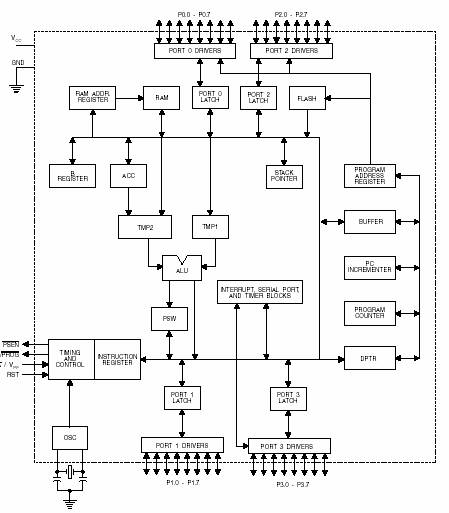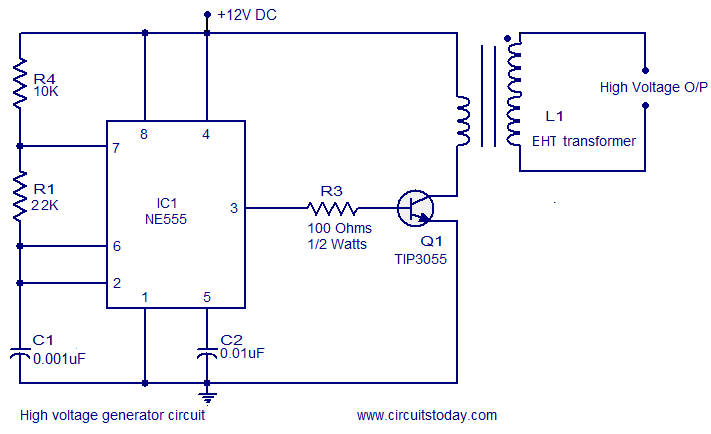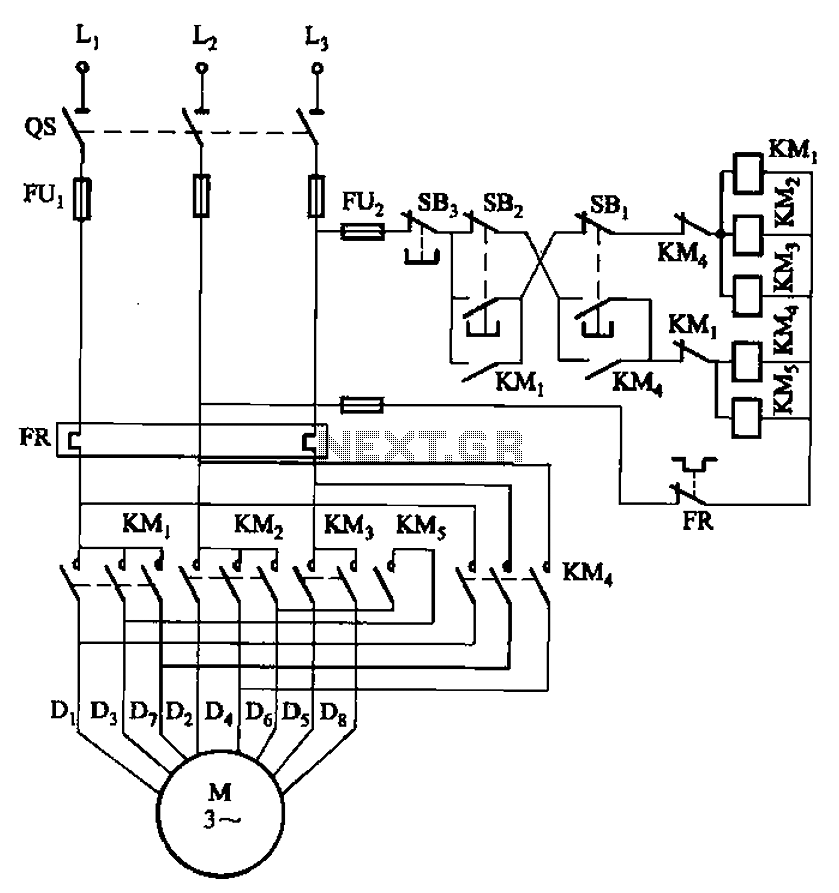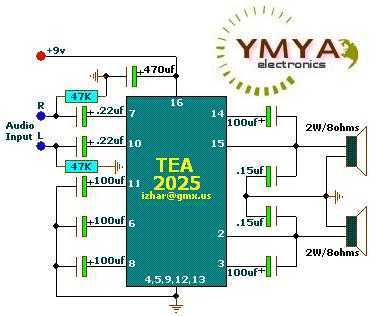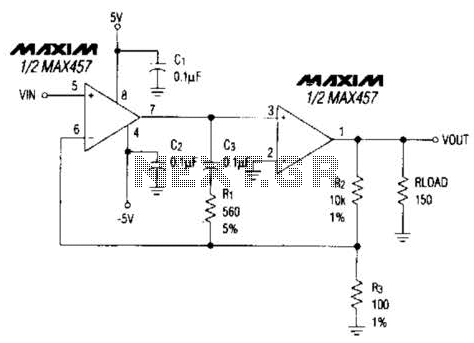
Amplifier circuit for small room
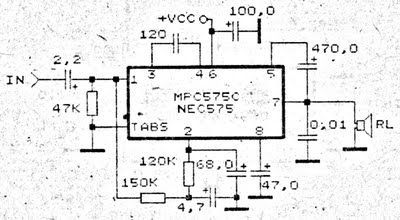
An amplifier circuit is particularly well-suited for use in confined spaces, such as within vehicles. It requires a voltage supply ranging from 9 Volts to a maximum of 17 Volts. This amplifier circuit utilizes the IC MPC575C, which is similar to the NEC575. The power output is relatively modest, at only 2 Watts.
The described amplifier circuit is designed to operate efficiently within limited physical dimensions, making it ideal for automotive applications where space is often at a premium. The input voltage range of 9 to 17 Volts allows for flexibility in various vehicle electrical systems, accommodating different battery and alternator outputs.
The choice of the MPC575C integrated circuit indicates a focus on reliability and performance, as this IC is engineered for audio amplification applications. Its architecture is optimized for low distortion and high fidelity, ensuring that the output signal remains true to the input. The similarity to the NEC575 suggests that it can be interchanged with minimal impact on performance, providing designers with options based on availability or cost.
With a power output of 2 Watts, this amplifier circuit is designed for low-power applications, making it suitable for driving small speakers or headphones in automotive environments. The low power requirement also ensures that the circuit can operate without placing excessive load on the vehicle's electrical system, which is critical in maintaining overall vehicle performance and battery life.
To implement this circuit, appropriate passive components such as resistors and capacitors must be selected to match the specifications of the MPC575C. Careful attention should be given to the layout of the circuit board to minimize noise and interference, particularly in the electrically noisy environment of a vehicle. Additionally, thermal management considerations should be addressed, as even low-power amplifiers can generate heat, which must be dissipated to maintain reliability.
Overall, this amplifier circuit represents a practical solution for audio amplification needs in compact spaces, combining efficiency, reliability, and ease of integration into existing systems.Amplifier circuit is very suitable to be used or applied in a narrow space such as in cars and so forth. Voltage amplifier is needed starting from 9 Volts to 17 Volts maximum. This amplifier circuit uses IC MPC575C, andsimilarities NEC575. Power output is relatively very small, only 2 Watts. 🔗 External reference
The described amplifier circuit is designed to operate efficiently within limited physical dimensions, making it ideal for automotive applications where space is often at a premium. The input voltage range of 9 to 17 Volts allows for flexibility in various vehicle electrical systems, accommodating different battery and alternator outputs.
The choice of the MPC575C integrated circuit indicates a focus on reliability and performance, as this IC is engineered for audio amplification applications. Its architecture is optimized for low distortion and high fidelity, ensuring that the output signal remains true to the input. The similarity to the NEC575 suggests that it can be interchanged with minimal impact on performance, providing designers with options based on availability or cost.
With a power output of 2 Watts, this amplifier circuit is designed for low-power applications, making it suitable for driving small speakers or headphones in automotive environments. The low power requirement also ensures that the circuit can operate without placing excessive load on the vehicle's electrical system, which is critical in maintaining overall vehicle performance and battery life.
To implement this circuit, appropriate passive components such as resistors and capacitors must be selected to match the specifications of the MPC575C. Careful attention should be given to the layout of the circuit board to minimize noise and interference, particularly in the electrically noisy environment of a vehicle. Additionally, thermal management considerations should be addressed, as even low-power amplifiers can generate heat, which must be dissipated to maintain reliability.
Overall, this amplifier circuit represents a practical solution for audio amplification needs in compact spaces, combining efficiency, reliability, and ease of integration into existing systems.Amplifier circuit is very suitable to be used or applied in a narrow space such as in cars and so forth. Voltage amplifier is needed starting from 9 Volts to 17 Volts maximum. This amplifier circuit uses IC MPC575C, andsimilarities NEC575. Power output is relatively very small, only 2 Watts. 🔗 External reference

